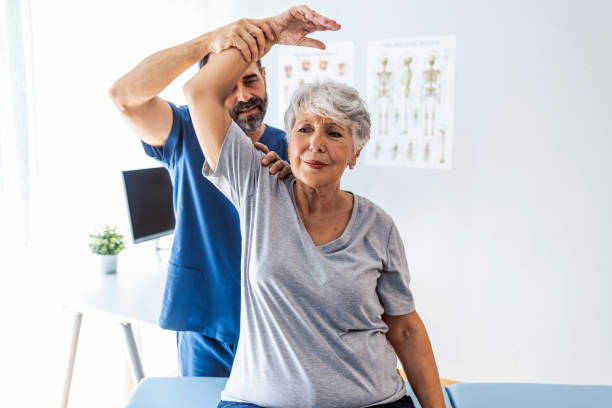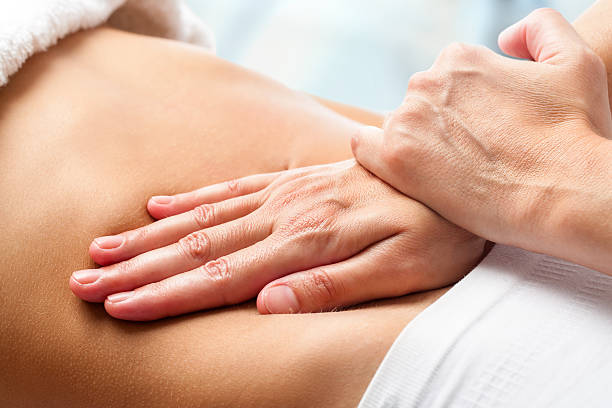Osteo Watsonia focus on the structure of the body as well as its function. They use manual ‘hands on’ techniques to improve circulation by releasing any blockages and improving joint movement.
This can help to reduce inflammation and boost overall health and wellbeing. The fluids of the body carry life-sustaining compounds including hormones, enzymes and their secretions, neural impulses, nutrition and dissolved gases.

Joints
Inflammation in your joints can impact your circulation, causing fluids to pool and restricting the movement of blood. Osteopathy aims to remove the build-up of fluids, restore alignment and improve the mobility of your joints.
Osteopathy uses a gentle manipulation of the joints to increase their mobility and reduce pain. This increases the flow of blood around your joints and the rest of your body, allowing oxygen to reach all areas more effectively and eliminate waste products.
Joint aches and pains are often the result of poor posture, injury, and age-related wear and tear. Over time this can cause imbalances that lead to inflammation, limiting your range of motion and ultimately leading to more serious problems.
Osteopaths use a variety of techniques to ease your aches and pains, including low-velocity thrusts and soft tissue manipulation. By treating your body as a whole, your osteopath can assess your needs and devise a treatment strategy to best help you.
Osteopathy promotes relaxation, which in turn can reduce stress levels and improve sleep patterns. It can also support your digestion, improving your energy levels by ensuring that you are absorbing the nutrients that you need to stay healthy and energetic. Gentle manipulation of the vagus nerve (which connects your brain to your digestive and cardiovascular systems) can also balance your autonomic nervous system, slowing your heart rate and promoting better digestion.
Muscles
The muscle tissue of your body is a major contributor to your circulation. Osteopathic techniques can help your muscles to be balanced and able to receive the nutrients they require to work effectively. This helps with breathing, movement, and also with blood flow and lymphatic drainage.
Pregnancy and the birthing process, whatever way you go through it, puts a huge amount of strain on your body. This can cause areas to become misaligned, especially in the hips, pelvis and lower back. This in turn can cause problems with other joints such as the knees or shoulders. It can also affect the respiratory diaphragm. Breathing can become strained and inefficient when the muscles around the diaphragm are not functioning properly. Osteopaths use a technique called Muscle Energy Technique to treat these imbalances and improve your breathing.
A key principle of osteopathy is that all parts of the body are connected and that a dysfunction in one part can have an impact on every other area of the body. If a joint, muscle or other tissue becomes restricted it can create restrictions in the surrounding structures that then limit circulatory, lymphatic and nervous system function.
These restricted areas may have developed through injury, bad posture, a sedentary lifestyle or as a result of a traumatic event. Over time these can build up and lead to pain, numbness or swelling. Osteopathy is a great way to address these issues and allow your body to heal itself and reduce your risk of developing serious health problems.

Lymphatic System
As well as ensuring that proper energy is distributed throughout the body, osteopaths also use techniques to enhance lymphatic drainage. This is important as the lymphatic system is responsible for filtering out waste products, fighting infection and boosting immunity. Poor lymphatic flow can cause fluid accumulation, swollen glands (lymphoedema) and a feeling of heaviness in the arms or legs. Osteopathy can address the root causes of lymphatic drainage problems, resulting in a more healthy and energetic system.
A lymphatic system is a network of vessels and organ tissue (like lymph nodes, the thymus and the spleen) that is designed to work with the immune system and carry components of the immune system like white blood cells around the body. Osteopaths have long used techniques that promote this natural process of the lymphatic system.
Using manual manipulation and mobilisation, osteopaths encourage lymphatic flow in the limbs and other primary areas of the body. This encourages the lymphatic system to shift the accumulated fluid toward the heart and larger organs for processing. This assists in preventing stagnation of the lymphatic system and can improve the efficiency of cell regeneration and metabolism. Osteopaths also treat the spinal transitional zones (cervicothoracic, thoracolumbar and lumbosacral) to restore the physiologic biomechanical motion of these important structures that can influence lymphatic function; treat myofascial restrictions in affected lymphatic drainage pathways; decongest regional lymph nodes and enhance the movement of excessive fluid in any affected peripheral regions of the body.
Vagus Nerve
In addition to improving circulation, osteopathic treatment can also help with respiratory problems and digestion. It can also enhance the immune system. This is due to releasing tension in the body.
Osteopathy is a holistic form of therapy that involves manual manipulation of the soft tissues and hard structures. This releases tension and restrictions, which improves the function of these structures and systems. It’s known for promoting general wellness and can be used as a compliment to other medical treatments.
Good circulation is responsible for directing life-supporting blood throughout the body 24 hours a day. It’s what allows your heart to pump, brain to function and muscles to move. However, it’s not uncommon for this process to get impeded by twists, curves or pulls that develop in the body due to structural imbalances, posture, accidents, surgery, injury and stress.
These impediments can cause a variety of issues, from pain to poor health. For example, poor circulation can lead to heart rhythm disorders such as arrhythmia and tachycardia. Osteopathy can help by balancing the autonomic nervous system through gentle manipulation of the vagus nerve. This slows the body’s stress response, aids digestion and lowers the heart rate. It can also relieve tense and knotted muscles that cause stress headaches. The result is a balanced, healthy, functional body that’s more resilient to recurrent infections and chronic diseases.



